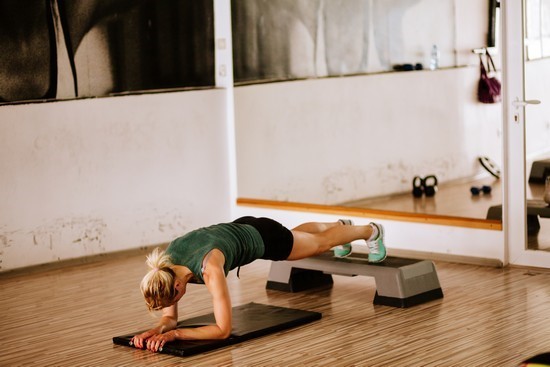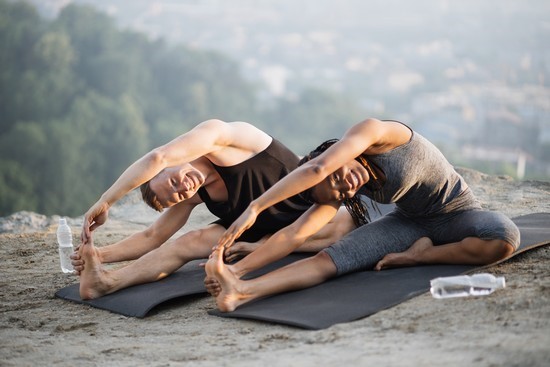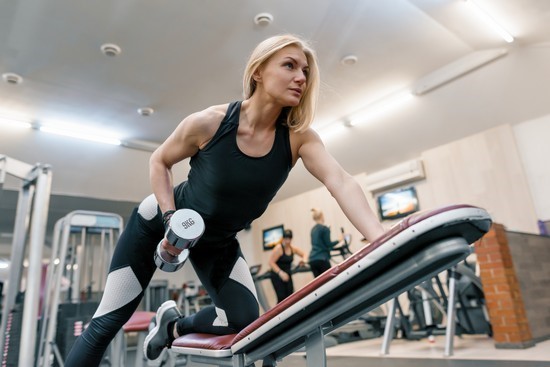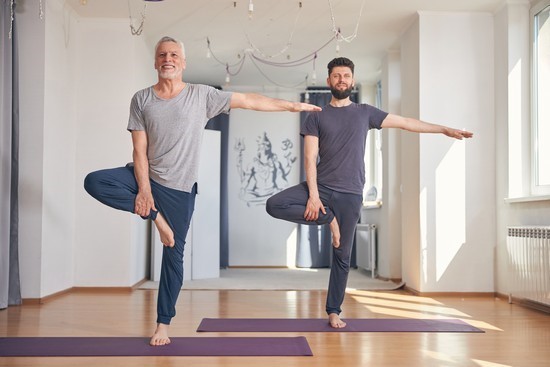Physical fitness is one of the most important aspects of
health. It plays an integral role in preventing many diseases and can even help manage certain conditions. while, there is a greater emphasis on the activities that reduce the risk of certain diseases or that help with physique, but there are actually four different types of exercise that can greatly improve your health and become especially important as you age.
اضافة اعلان
1- Endurance exercises

Endurance exercises are commonly referred to as aerobic
exercises. They are the cornerstone of disease prevention and management due to
the great benefits they have on the cardiovascular system.
The
Centers for Disease Control and Prevention (CDC) make three recommendations on how much aerobic exercise one should get a week:
150 minutes of moderate aerobic exercise per week (30 minutes a day for 5
days); 75 minutes of vigorous aerobic exercise per week; or an equivalent mix
of moderate and vigorous aerobic exercise.
Aerobic exercises increase heart and breathing rates,
and are of a wide variety. Examples of moderate aerobic exercises include brisk
walking, swimming, jogging, cycling, and dancing. Vigorous aerobic exercises
include jogging or running, but also many newer fitness regimens such as
Crossfit or
High Intensity Interval Training (HIIT).
As we get older, it becomes harder to perform
vigorous activities, so moderate exercises may be a better option. Still,
vigorous exercises are a better option for younger individuals, as they are
higher impact. High-impact exercises help strengthen bone mineral density which
is important in the prevention or slowing the progression of osteoporosis. All
aerobic activities have additional benefits. In the short-term, they help
improve blood circulation and relax vessel walls, lower blood pressure and
blood sugar, burn body fat, reduce inflammation, improve mood and mental
health, and also help raise the HDL (the “good” cholesterol) while lowering the
LDL (the “bad” cholesterol).
In the long-term, aerobic exercises dramatically reduce the risk of heart disease, stroke, type 2 diabetes, and even certain cancers.
In the
long-term, aerobic exercises dramatically reduce the risk of heart disease,
stroke, type 2 diabetes, and even certain cancers. Aerobic exercises can also
help manage symptoms for those already suffering from certain condition
and help slow the progression of the disease; just be sure to consult your
doctor on a regimen appropriate for you.
2- Flexibility exercises

Flexibility exercises typically center on stretching. It is
an underappreciated form of exercise that should be incorporated more into
physical activity and daily routine.
To date, the CDC has no recommendation on the amount of
stretching that should be done in a week. However, the
American College of Sports Medicine (ACSM) recommends stretching a minimum of 2-3 times per week,
but states that daily stretching is most effective.
ACSM recommends that adults hold each static stretch for
10-30 seconds, but in older individuals, each stretch should be held for 30-60
seconds. Our joints and muscles have an elastic property and as we age, they
become less and less elastic. This greatly increases the risk of muscle cramps
and pain, damage to the muscles, strains, and joint pain.
By stretching daily we ensure that muscles and tendons
remain loose and elastic. In addition to reducing the risk of injury,
stretching also helps improve the range of motion and mobility, and reduces
preexisting pain.
Many people prefer to perform stretching exercises in the
morning to help prepare for the day ahead of them. Stretching can be done as
part of other physical activities, such as aerobic exercises and strength
training exercises. If you prefer to stretch as a warmup to exercise, it is
recommended to start with dynamic stretches (performed while moving around) and
end your workout with static stretches (performed while sitting down or
standing).
3- Strength exercises

Strength training exercises are not only for body builders;
they should be incorporated into regular physical fitness. The CDC recommends
two or more days a week of strength training that works all the major muscle
groups, which includes the legs, hips, back, abdomen, chest, shoulders, and
arms.
The gym is an excellent place to do your strength training
exercises. Typically, gyms utilize weight resistance (weightlifting) and work
muscle groups in isolation. This form of exercise is ideal for people looking
to change their physique. For those who avoid the gym, weights are not the only
way to strength train. Exercises such as squats, pushups, pullups, and planks
use the weight of your body to provide resistance.
The goal of strength training is to build or preserve muscle
mass. Just as we lose bone density as we age, we also lose muscle mass.
Improved or preserved muscle mass is not just for looks, it is important for
performing daily activities and general mobility.
Improved or preserved muscle mass is not just for looks, it is important for performing daily activities and general mobility.
Additionally, strength training helps strengthen bone,
lowers blood sugar, and helps reduce stress and pain in problem areas such as
the back and certain joints.
4- Balance exercises

The three aforementioned exercises prevent disease and
injury in direct ways; balance exercises, however, take a more indirect
approach. Despite this, balance exercises are still important and should be
incorporated into physical activity. Fortunately, there are many exercises that
involve balance in some form or another. For example, dancing is an excellent
aerobic exercise, and it also includes elements of balance. Similarly, most
sports, such as soccer, are aerobic but also include balance exercises in the
form of agility training. Performing these forms of exercise at a younger age
helps maintain balance later in life, but it should still be practiced as we
age.
Our sense of balance can diminish with time; at the same
time, certain traumas or diseases can also affect our balance. As we age, the
risk of simple falls resulting in injury becomes higher. Our bones naturally
become weaker, and falls can break bones, which is debilitating. Even as a
young adult, you should incorporate forms of balance exercise in your activity.
Activities such as yoga, Pilates, and tai chi focus on
balance and stretching. For those who are looking to specifically work on
balance, there are exercises designed to help improve it. These can include
practicing standing on one foot, walking heel to toe, and balance walk, which
is a form of walking where you stare at a spot ahead of you and walk in a
straight line. As you walk, pause to lift the back leg while staring at the
spot.
Balance
exercises are simple and straightforward in nature, and they are very beneficial. If you are older and would like to perform these
exercises, consult your doctor first. It is best to have support around you,
such as a chair or a wall, and even better if you can have someone assist and
supervise you.
Read more Health



